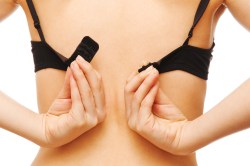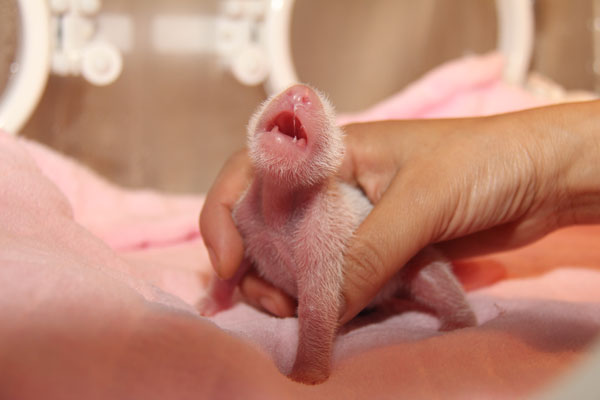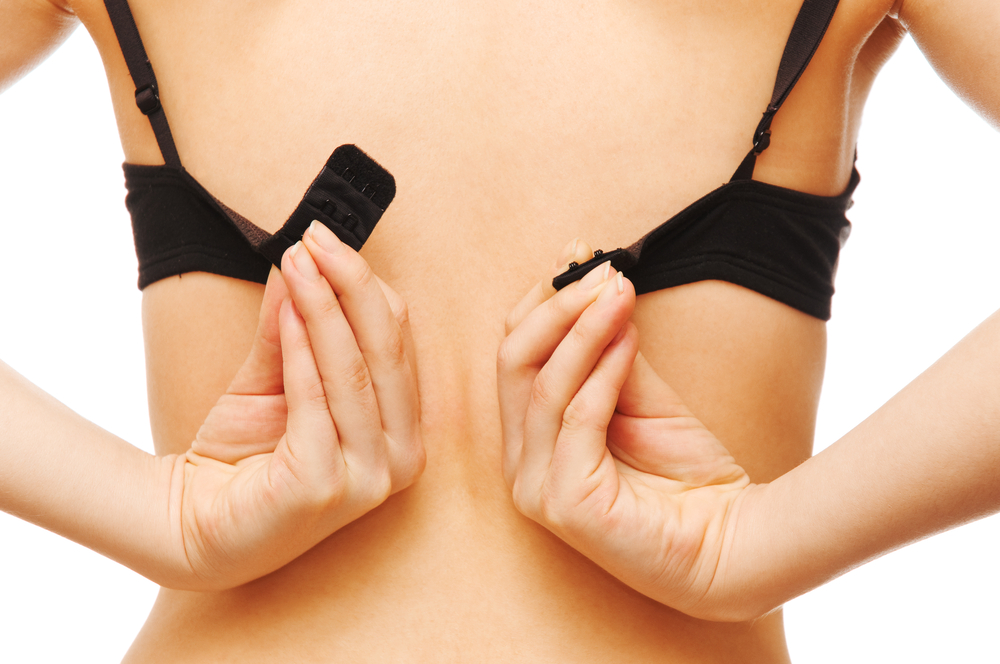Send your question to Umbra!
Q. Dear Umbra,
Lately I’ve begun to wonder about those stand-up-by-themselves, foam rubber bras that we women seem to have become addicted to because they provide some modesty (or much needed augmentation) for our spandex blend clothes. Is this stuff (said bras and our spandex-laden wardrobes) going to sit around un-degraded in landfills until after the Second Coming, or is it breaking down into substances that will turn as yet unborn children into 10-toed salamanders?
Should we be just saying no to the fashion industry?
Purrl Gurrl
Seattle, Wash.

Photo by Shutterstock.
A. Dearest Purrl,
We should always say no to the mainstream fashion industry, shouldn’t we? It doesn’t have our ecological or economic interests at heart.
The best part of my initial research on your question was when Google wondered, after fielding my request for information on breasts and foam, if what I actually wanted was a recipe for pan-seared chicken breasts with barley foam. Come to think of it, I do. But I am not here to discuss chicken. I’m here to discuss nipples.
I too have noted the rise in foam bras, and the not-so-subtle implication that women have something to hide. We are, in fact, supposed to “camouflage nipple protrusion.” When did this become de rigueur? I checked with Florence Williams, author of Breasts: A Natural and Unnatural History, who dates the shunning of nipples to prudish American film censors in the 1930s. Their ban was obviously incomplete (see, for instance, Farrah Fawcett). But a more widespread societal condemnation of nipples has firmly taken hold in this millennium, giving us the rise of contoured bras.
Many American women seem compelled to go down this fashion road. I conducted an informal survey of the women of Grist, whose responses confirmed two interesting things: Most of them feel self-conscious if their nipples are visible, but they also “don’t really notice if other women’s nipples are showing or not.” Which leads me to a highly unscientific conclusion about the source of this concern: men. Or, as this rather hilarious advice column puts it: “Women who work in an environment with a lot of men or young children, for whom breasts are a foreign and interesting distraction, may need a tool to keep nipples hidden.”
So what exactly is in these “tools”? In the case of the molded contraptions of which you speak, it’s generally polyurethane foam. Let’s quote from The New York Times, shall we? “Polyurethane foam is made from petroleum, and it can emit volatile organic compounds (VOC’s), which have been linked to respiratory irritation and other health problems.” Among its other questionable attributes, polyurethane foam does not degrade in landfills, although it can be recycled — just think, your foundation garment could become carpet padding or stuffed-animal innards!
Spandex also contains polyurethane, and requires some diligence on the part of its makers to ensure that our clothes don’t kill us: “Spandex is made from several chemicals that are known sensitizers. TDI and MDI (Toluene-2,4-diisocyanate; Methylene bisphenyl-4,4-diiisocyanate) are precursors of the polyurethane used to make spandex. TDI, a toxic chemical, has proved carcinogenic and can cause severe dermatitis. MDI is also toxic. Manufacturers of spandex products must use strict quality control procedures to ensure that no residual unreacted MDI or TDI exists in the final product.”
I like to give you the facts, but I am not trying to frighten you. Frankly, I think the greatest environmental and health risks are to the poor workers who are manufacturing our bras, mostly in China of course. Occasionally one does hear of health scares related to wearing bras, but these seem generally unfounded.
Still, I’ll invoke the precautionary principle when it comes to bras as everything else: Why cloak ourselves in maybe-yucky polyurethane all day when we could reduce our reliance on petroleum and chemicals by investing in a nice, simple, organic-cotton number? (They even have padded models for the nipple-averse.) You’ll feel better about what you’re buying, and you can cut it up and compost it when the time comes.
Supportively,
Umbra




